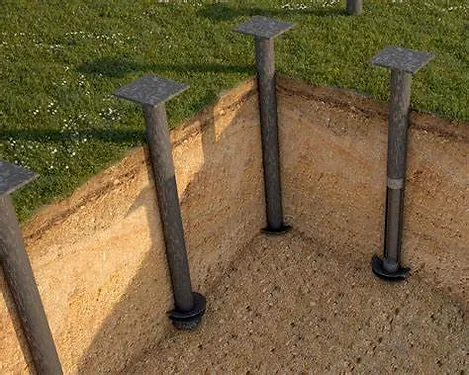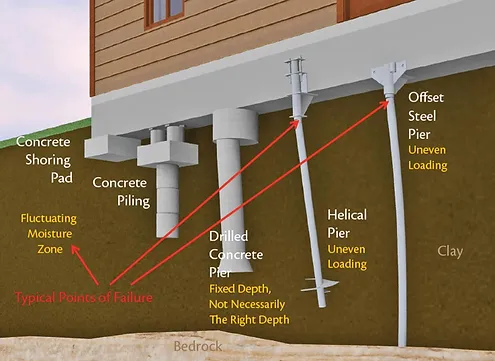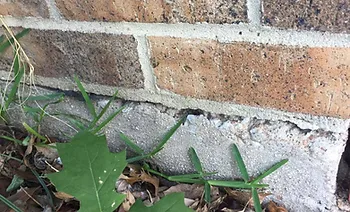
Building structures, over time, may face issues like wall cracks, out-of-level door and window frames, and uneven floors. In many cases, this is due to foundation settlements. It’s not uncommon for newly built homes to develop minor, superficial cracks. However, larger or more frequent cracks may signal below-grade issues related to soil compactness, voids, or water-related subsoil compromises. In such cases, seeking foundation support in Edmonton can help address these underlying problems and ensure the stability of your building.
The net effect of such factors can result in “building sag” or “grade beam tilt”. Below-grade component devices may be introduced to rectify these problems or, at the very least, prevent the process from getting any worse. One example of this is foundational support piles.
Piling is the process of drilling foundations through the ground to provide more structural strength to the weak soil underneath. Piling prepares the existing ground to carry heavy loads, such as a new home or office complex. If the upper soil layers are too weak or highly compressible to support the loads from the superstructure, engineers use piles to transfer these loads into a stronger layer of soil or onto bedrock. They typically drill piles deep enough to reach these stronger layers or a load-transferring base like bedrock. In other cases, they screw the piles into the soil to develop sufficient resisting torque, or they push them into the soil to create frictional resistance. To ensure the stability and security of any building structure, contractors then affix pile caps or support plates to the top of each pile and connect them to the existing foundational support, such as the grade beam.
Three common examples of these are concrete piling, helical screw piles, and steel pier piles (shown in the drawing below):

When to Use Pile Foundation?
- When you find that the groundwater table is quite high.
- When the building above exerts heavy or non-uniform loads.
- When it is not feasible to use other types of foundation due to cost or incompatibility.
- When the soil at a shallow depth is too compressible.
- When there is a possibility of a washout due to a riverbed or seashore nearby.
- The presence of a canal or deep drainage system near the structure.
- When poor soil conditions make it impossible to excavate the desired depth.
- When it is impossible to keep the foundation trenches dry due to water seepage.
Advantages of Foundation Piles
- You can pre-cast them according to specifications.
- You can form it into a variety of shapes and sizes for more efficient use.
- Clean, neat performance requiring minimal supervision and low storage space.
- Fit for spaces where drilling of holes is not an option.
- Able to utilize underground water tables.
Geotechnical and structural engineers, along with geologists, should work together to ensure that the pile foundation analysis integrates seamlessly into the overall foundation design. At TOK Engineering, we emphasize this coordination through detailed plans and specifications, preconstruction meetings, and construction. For expert foundation support in Edmonton, trust our team to deliver a seamless and reliable foundation solution.


